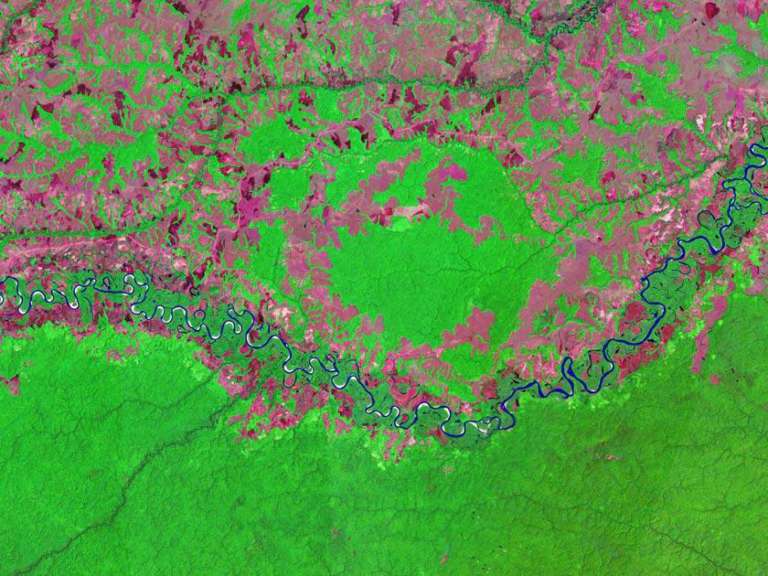Bruce Betts • May 08, 2012
More Evidence for Impact Origin for Colombia’s Vichada Structure
In 2004, Planetary Society sponsored researcher Max Rocca reported discovery of what looked like a huge impact structure in Colombia by using Landsat images like the one shown here. Evidence continues to pile up that this structure, now called the by some permutation of the words Rio Vichada Impact Structure, is indeed the largest impact structure in South America.

A publication earlier this by Orlando Hernandez et al. from Universidad Nacional de Bogota in the Boletin de Geologia adds more evidence in the form of gravity and magnetic field studies. Their findings are consistent with a 2 ring impact structure with one ring at a diameter of about 30 km and one at about 50 km. Indications of these can be seen in the image, but the gravity and magnetic data give a probe into the structure of the subsurface. What they find is consistent with impact. They also find blocks that may be ejecta, and faults that appear to be associated with the impact rings. The full paper with all the gory detail is here (8MB PDF). It also includes some images on the ground in the area.

Vichada isn’t yet a fully confirmed impact structure, but the case is certainly getting stronger. Meanwhile, Max continues to find other possible impact structures, and a variety of scientists in a number of countries are following up. I’ll keep you posted. The more we learn of impact into Earth in the past, the more we learn about impact populations and the threat of future impacts.
Let’s Go Beyond The Horizon
Every success in space exploration is the result of the community of space enthusiasts, like you, who believe it is important. You can help usher in the next great era of space exploration with your gift today.
Donate Today

 Explore Worlds
Explore Worlds Find Life
Find Life Defend Earth
Defend Earth

